Solar Batteries
Everything You Need To Know About Solar Batteries Before You Buy
In this guide we will cover off everything you need to know to help you make a better decision when buying a battery.
From Jargon to technical data that should be considered, we will help you make a better battery decision.
Firstly, this article will focus on the most common grid connected style batteries. There are other options available but we won’t get distracted.
In this you will learn:
How Does A Solar Battery Work?
Without a solar battery, a solar system works by generating electricity from the sun. The electricity generated by the sun through the solar panels is Direct Current or DC for short. This travels from the panels to an inverter which changes it to Alternative Current or AC for short. AC is what we use in our homes.
This electricity is used by the home first.
Considering most homes don’t use all their electricity during the day the solar system will export any excess electricity to the grid and the electricity retailer will provide a credit for each kilowatt hour exported.
When a solar and a battery system is combined, in most cases, the solar will provide the home with electricity and the excess that isn’t used by the home will charge up the battery.
Once the battery is fully charged all excess electricity after the battery is charged will be sent to the grid.
Once the home is using more electricity than what is being generated by the solar, which is usually at night, the battery will discharge the stored power into the home.
Request A Obligation Free Battery Quote
Solar Battery Mega Table
Compare Some Of The Batteries We Have Available Here At Teho
| Battery | SBR096 | SBR128 | B3 Plus | RESU10 | RESU12 | Powerwall II | sonnenBatterie Evo | LUNA2000-5-S0 | SENEC.Home V3 Hybrid |
|---|---|---|---|---|---|---|---|---|---|
| Manufacturer | Sungrow | Sungrow | Alpha ESS | LG | LG | Tesla | sonnen | Huawei | SENEC |
| What does it look like? | 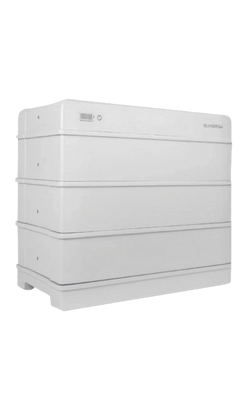 | 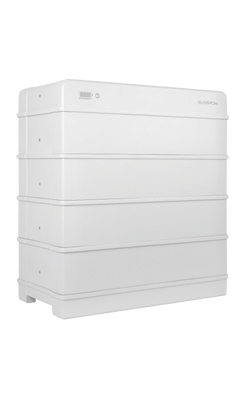 | 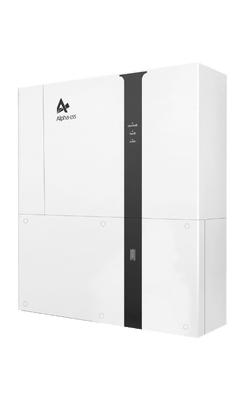 | 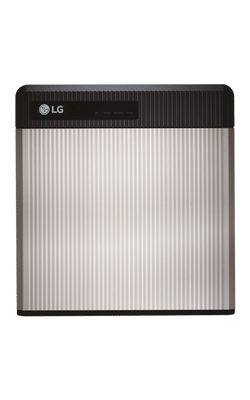 | 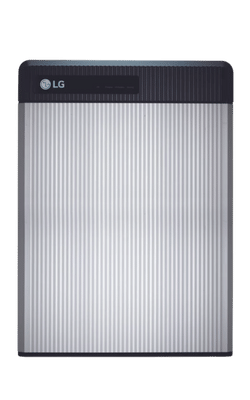 | 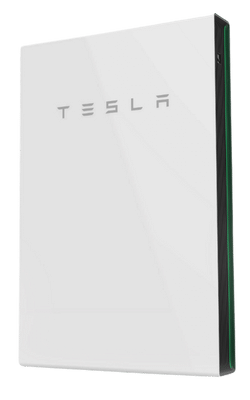 | 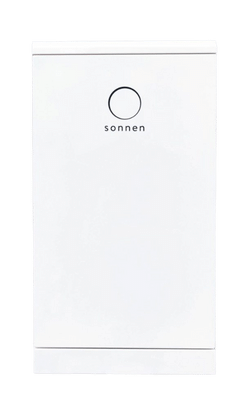 | 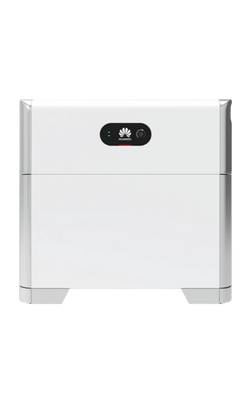 | 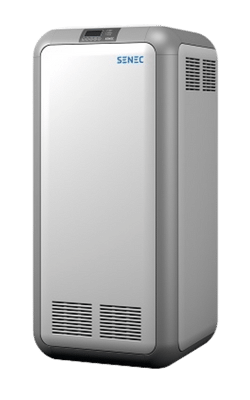 |
| Full Report | Coming soon | Coming soon | Coming soon | Coming soon | Coming soon | Tesla Powerwall Full Details | Coming soon | Coming soon | Coming soon |
| Cell Chemistry | LiFePO4 Prismatic Cell | LiFePO4 Prismatic Cell | LiFePO4 | Lithium-Ion (NMC) | Lithium-Ion (NMC) | Lithium-Ion (NMC) | Lithium Iron Phosphate | LiFePO4 | Lithium-Ion (NMC) |
| Nominal Storage | 9.6 kWh | 12.8 kWh | 5.04 kWh | 9.8 kWh | 13.1 kWh | 14 kWh | 11 kWh | 5.00 kWh | 10 kWh |
| Usbale Storage | 9.6 kWh | 12.8 kWh | 4.79 kWh | 8.8 kWh | 11.7 kWh | 13.5 kWh | 10 kWh | 5.00 kWh | 9.0 kWh |
| Power* | 5.76 kW | 7.68 kW | 3.00 kW | 5.00 kW | 5.00 kW | 5.00 kW | 5.00 kW | 2.50 kWh | 5.00 kW |
| All In One | No | No | AC Coupled | No | No | AC Coupled | AC Coupled | No | Yes |
| IP Rating | IP55 | IP55 | IP65 | IP55 | IP55 | IP67 (Battery & Power Electronics) IP56 (Wiring Compartment) | IP 56 | IP 66 | IP30 |
| Installation Location | Indoor/Outdoor | Indoor/Outdoor | Indoor/Outdoor | Indoor/Outdoor | Indoor/Outdoor | Indoor/Outdoor | Indoor/Outdoor | Indoor/Outdoor | Very Indoor Only |
| Warranty | 10 Years | 10 Years | 5 Years | 10 Years | 10 Years | 10 Years | 10 Years | 10 Years | 10 Years (You can extend up to 20 years for extra $) |
| Weight | 114 kg | 147 kg | 64 kg | 75 kg | 98.5 kg | 114 kg | 163.5 kg | 63.8 kg | 115.0 kg |
| Dimensions W*H*D | 625*545*330 mm | 625*675*330 mm | 640*725*250 mm | 452*484*227 mm | 452*626*227 mm | 755*1150*155 | 710*1400*427 | 670*600*150 | 530*1175*406 |
| Operating Temp Range | Charge: 0 to 50 ℃ Discharge: -30 to 50 ℃ | Charge: 0 to 50 ℃ Discharge: -30 to 50 ℃ | -10 to 50 ℃ | -10 to 45 ℃ | -10 to 45 ℃ | –20 to 50℃ | -5 to 45 ℃ | –20 to 55℃ | 5 to 40℃ |
| Cooling Method | Natural convection | Natural convection | Natural convection | Natural convection | Natural convection | Liquid Cooling | Coming soon | Natural convection | Coming soon |
What Are The Benefits Of A Solar Battery?
The benefits of a solar battery are vast. In no particular order, these
1. Autonomy
Installing a solar battery at your home will increase your home’s autonomy. You will be able to generate, store and consume all your own electricity making you much less reliant on the grid.
2. Saving Money
Having a battery can save you money. While the returns on solar are much stronger, batteries are becoming much more lucrative with state rebates and increasing uptake. A solar battery will enable you to use your stored electricity when you need it.
If you are on a Time of Use Tariff the PEAK charge is when a lot of homes use their electricity. This is commonly between 2pm-8pm Monday to Friday. The cost of electricity during this PEAK period can be around 50c/kW depending on which state you are in.
3. Blackout Protection
Good solar batteries will come with blackout protection. This functionality will allow the home to use stored battery power when the grid goes down. You will be smiling with the lights on and cold milk in the fridge while your neighbours will be sitting in the dark with the beginning of some new cultures.
Black out protection is also great for those who have certain appliances which need electricity, such as pumps on a toilet for a rural property.
4. Securing Your Energy Future
A Solar battery combined with a solar system will allow you to secure your home against the aggressive price increases of electricity from the grid.
5. Accessing Virtual Power Plants
A Virtual Power Plant or VPP is a network of decentralised generation and storage units, which are solar and battery systems across the country connected in one big virtual battery. When the price of electricity on the wholesale market goes UP, the batteries will discharge together and earn the Virtual Power Plant operator revenue, which can be shared with the owner of the battery.
Each Virtual Power Plant is different, but the concepts are very much the same.
Having a battery combined with your solar system will allow you to take part in these new programs.
Can I Achieve a $0 Energy Bill With A Solar Battery?
Yes, you can achieve a $0 Energy Bill with a Solar Battery and Solar System.
We all use electricity differently and it’s good to note that achieving a $0 Energy Bill is possible for some and not for others. There are many factors that contribute to whether a $0 Energy Bill is achievable.
While some can achieve a $0 Energy Bill with just solar, others might need a combination of solar and batteries.
While achieving a $0 Energy Bill is great, not being able to achieve one should not deter you from installing solar or a solar and battery system. Each kilowatt of electricity you generate and consume yourself, is a kilowatt you are not purchasing from the grid at high prices.
If I have Solar Can I Add A Battery?
A few years ago, most solar batteries were DC Coupled. This means they need to directly connect to a compatible hybrid inverter, also known as a “battery ready” inverter. Each Solar Battery manufacturer was compatible with different inverters, making the whole process difficult. There are still lots of DC Coupled Batteries in today’s market but more recently the industry has changed and more commonly Solar Batteries are AC Coupled.
An AC coupled battery allows a connection of a Solar Battery to nearly any existing solar system. It works by connecting directly into the AC wires in your home and it requires no compatibility with a inverter.
Request A Obligation Free Battery Quote
If I Have A Three-phase Connection From The Grid, Can I Get A Solar Battery?
Australian homes are usually single-phase power or three phase power, the difference is how much the home can draw from the grid. To check what you have, simply open your meter box, and see if you have 1 main switch or 3 main switches.
When inquiring and researching solar batteries, it is important to know if your home is single phase or three phases, this may determine the battery you choose.
Those with single phase connection won’t be too phased (lol, see what I did there) when it comes to choosing a battery.
While those with three phases will need to be more careful with their decision. Depending on the manufacturer, some may not have a three phase option.
Should I get a Solar Battery?
Deciding whether a solar battery is right for you is always a challenge. A few things to consider when thinking about installing a solar battery are:
- Do you use a lot of power at night?
- Do you suffer from black outs?
- Do you want to increase your autonomy?
How Much Is A Solar Battery?
Solar batteries range in price on a pretty wide scale. Teho has access to Australia’s cheapest solar battery. We also have access to some of the very best solar batteries in the world like Tesla Powerwall. However, we don’t like cheap when it comes to batteries because it is too important of an investment to take short cuts.
Realistically, for your average home you need to spend at least $12,000.00 to get a decent battery with a decent installation. That would be a battery with approximately 10kWh’s of storage. You can spend less however we would only recommend it if it is for a smaller battery. If it is 10kWh’s and cheaper, we would want to know why.
Types Of Batteries
Lithium-ion
A very common battery type and used by two of the largest manufacturers LG and Tesla. They charged and discharge exceptionally well. They are quite resilient to changes in ambient temperature and are quite compact compared to a Lead Acid.
Lead Acid
One of the oldest and most reliable battery technologies in the world, lead acid is what is used in most common car batteries. They can be sensitive to ambient temperature which can in turn impact their life span. They are a bit bulky and take awhile to charge compared to a lithium-ion however, they are reasonably cheap and there are well set up recycling channels for when your battery comes to the end of its life.
Lithium-Iron Phosphate
Used by one of the biggest (if not THE biggest) solar battery manufacturer Lithium-Iron Phosphate are quite uniquely suited to applications in the world of solar. They have a great lifespan and what is very exciting is, their makeup is considered much less toxic than a standard Lithium battery.


